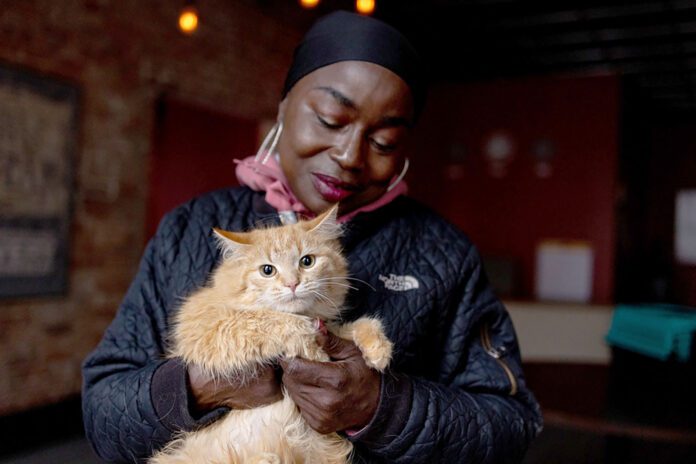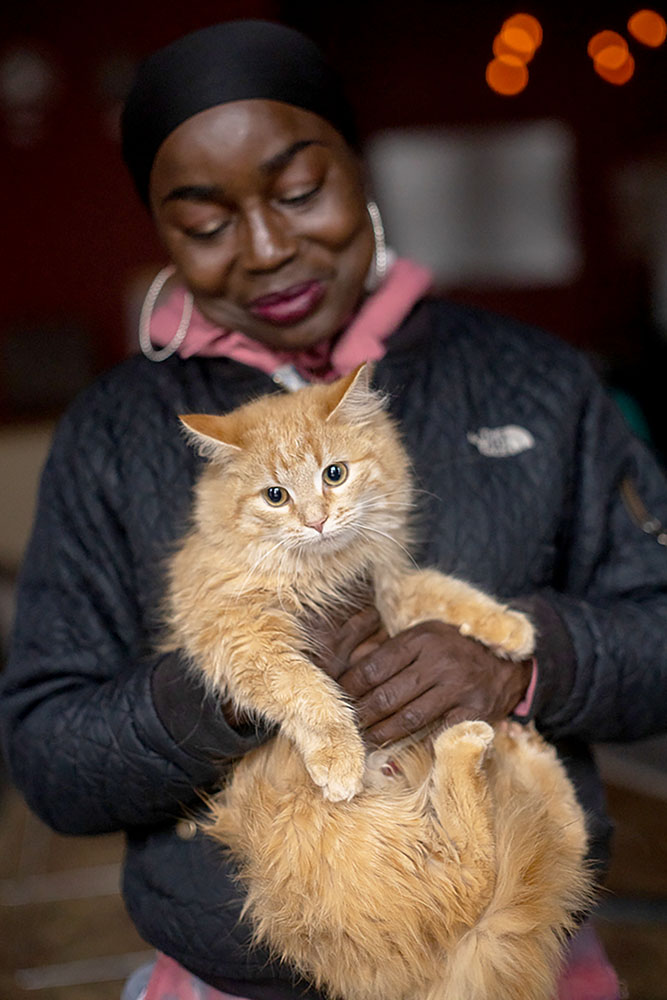Engage Toledo: 24/7 call center for city service requests, issues


Once upon a time in the not too distant past, a call to the City of Toledo’s hotline – (419) 936-2020 – was considered a dead end. Former Toledo mayor Mike Collins set out to fix it as a top priority for his incoming administration.
After Mike’s passing, Mayor Paula Hicks-Hudson picked up where the Collins administration left off. But alas, progress was slow. Paula sardonically called the city’s hot-line a “419-936-Black-Hole.” Many things went in and few came back out. Enter Jennifer Jaqua, Toledo’s commissioner of Customer Service and Engagement.
I ran into Jenny at a Toledo Walleye game recently and told her to keep up the good work for expeditiously taking care of a few calls I made to Engage Toledo recently (road kill near the Ottawa Park walking path and a water line leak on Kenwood Blvd.).
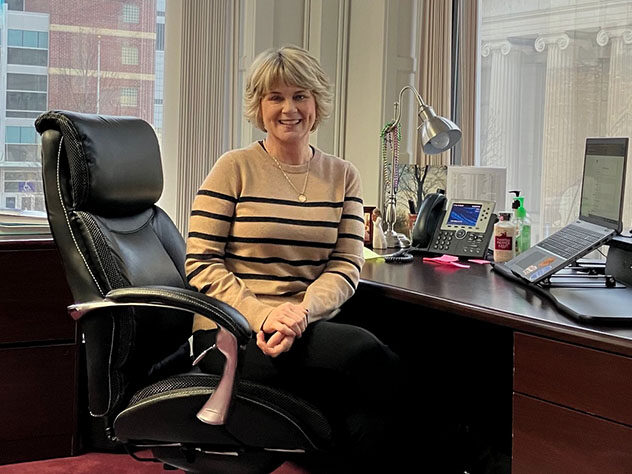
She thanked me and mentioned that Engage Toledo was recently approached by the City of Rochester, New York, inquiring how Toledo’s call center made such a dramatic turnaround. When other cities are asking how Toledo does it, it’s a story worth telling. I requested and was granted an interview with Jenny about Engage Toledo’s success story.
From my time on city council, I knew Jenny started with the City of Toledo as a legislative aide for city council in 2005. She was well-suited for this position after a very successful tenure as an overseas flight attendant for a major airline. Customer service came naturally for her. In 2011, Mayor Mike Bell appointed Jenny to manager of the Public Utilities Administration call center, which was responsible for dealing with incoming calls from citizens for water and sewer service issues.
Things were improving but persistent problems remained. Then a rain event occurred in 2015, of which Jenny said, “I’ll never forget those dates, June 26-27, when it rained for 48 hours straight.”
Calls were coming in from all over the city reporting flooding, sewer and all types of issues overwhelming the capabilities of the staff and telephone system. According to Jenny, the city administration conducted a debriefing about the problems with the current system and ideas for improvement. At the conclusion of that meeting, Mayor Hicks-Hudson and Public Utilities director Ed Moore told Jenny, “Congratulations, you have just become our manager of a city-wide 24 hour call center.”
Four months later, through the efforts of Public Utilities commissioner Abby Arnold and Jenny, Engage Toledo was created. During the first year, Engage Toledo took in about 70,000 calls for service. Fast forward to 2023, when Engage Toledo received 138,690 inbound calls for service. Here’s how the system works.
The average call is about 3½ minutes in length. The call taker usually asks the caller three to five questions and the request is assigned a reference number. The request for service is automatically sent to the division effected. From there, the on-duty foreman or supervisor assigned prioritizes the requests based on urgency. Water line breaks, traffic lights out, and matters of public safety receive immediate attention.
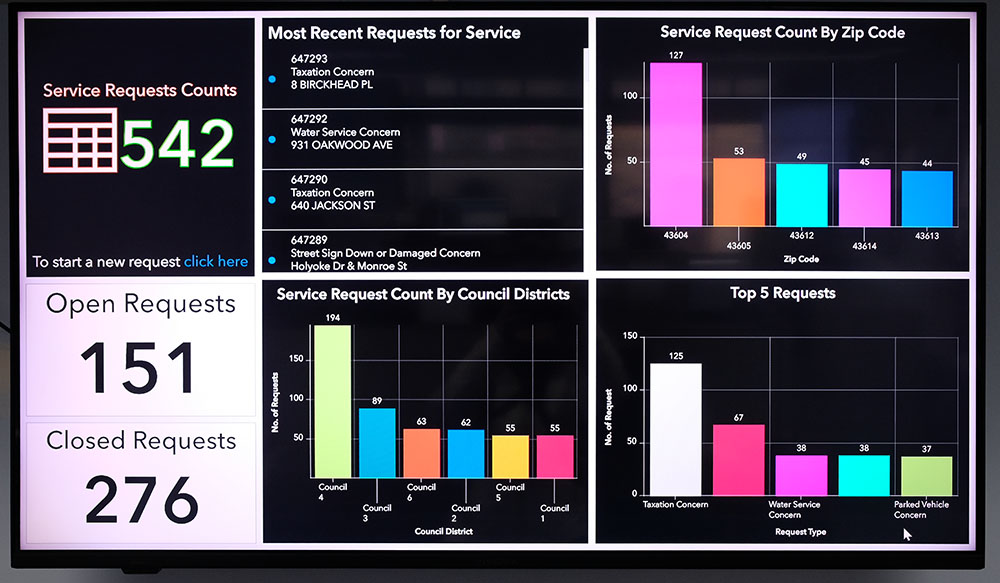

Jenny explained that every department has its own timeline for investigating requests for service with some departments having staff on duty 24/7 to handle requests, such as water in basement or debris in the roadway. On average, requests are initially investigated within 24-72 hours. In some instances, the initial investigation must be followed up by work orders to complete the request.
She went on to say that every division in the city has the capability to monitor all the calls received through Engage Toledo. For example, the police department monitors the frequency of reported residential speeding and uses that data to determine where to assign their crews for speed enforcement. Sometimes requests take longer to resolve, such as when it is necessary to track down the owner of a nuisance property or seek determinations from the Municipal Court process.
The most frequent calls are questions about the city income tax process, followed by code compliance issues. Some calls can be quite unique, such as, “there is a rooster on my car” or “I dropped my keys down the sewer grate.” Progress on requests for service can be checked using the reference number if the resident isn’t already notified of the resolved issue in the system.
She noted that in 2020, the Kapszukiewicz administration, recognizing the important resource Engage Toledo had become for the entire operation of the city, moved Engage Toledo from the Department of Public Utilities to the Department of Information Technologies so that, at an organizational level, we support all the city divisions.
With that move, Jenny was promoted to commissioner of customer service and engagement.
Asked for her final thoughts from 90 minute discussion as to the evolution of Engage Toledo, she went on to state, “I believe that Engage Toledo has brought trust and confidence.


“When a resident contacts Engage Toledo about a concern, it is in our tracking system; the city knows about, follows up and investigates the concern. Whereas before, residents didn’t have confidence that the city would address an issue. Now we can track everything, see pictures, detailed comments from the division and PDFs of communication on the topic.
“This [improved trust] is reflected in the doubling of our requests for service since its beginning. It is trust and confidence that is connecting the residents to the city services,” she stressed, “If you see an issue in the city, don’t assume the city knows about it. Take the time to report it to Engage Toledo.”
All citizens should heed Commissioner Jaqua’s advice. I know I shall continue to do so.
How to contact Engage Toledo
Residents do not need to know all phone numbers of the different city departments ... just one! Here are several ways to engage:
- Call 419-936-2020 | 24/7, 365 days a year.
- Email at engagetoledo@toledo.oh.gov.
- Visit the website, toledo.oh.gov/engage, and create a service request through the customer service portal.
- Download the Engage Toledo mobile app at toledo.oh.gov/app.
- And soon, city council will consider approval of software called Chat Bot, where residents can ask questions on the city’s website and opt in to be able to text service requests.
Bittersweet Farms redefines autism therapy
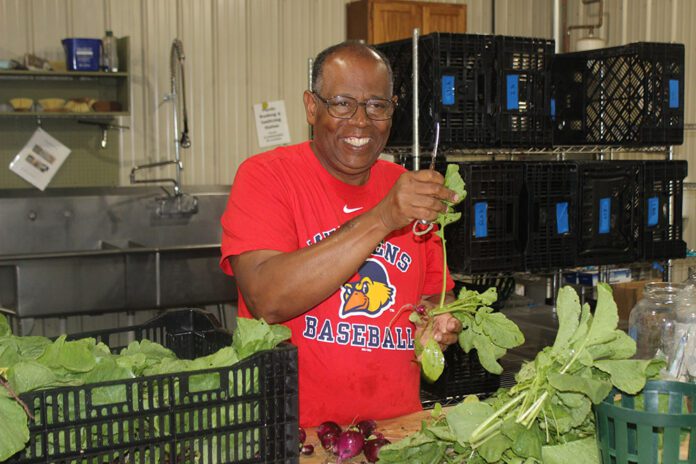

WHITEHOUSE – Bittersweet Farms is redefining autism therapy by combining the nurturing environment of a working farm with innovative therapeutic programs. Established in 1983, this nonprofit organization is known for its approach to autism care, which focuses on meaningful work, community living and comprehensive support.
Like the produce they grow, Bittersweet Farms began as a seed that was planted in the minds of Toledo Public School teacher Bettye Ruth Kay, the students with autism in her special education classroom, and their families. As her students aged out of public education in the late 1970s, they faced limited options.
Inspired by Somerset Court in England, the first farmstead community for adults with autism, Ruth Kay returned to Ohio and founded Bittersweet Farms in 1983 with the help of the local community. It became the first farmstead program for adults with autism in the U.S. and the second in the world.




Agriculture as therapy
At the heart of Bittersweet Farms’ therapeutic approach is its 80-acre working farm. Participants engage in various tasks—tending to organic vegetable gardens, caring for livestock and creating artisanal products in workshops. These activities are therapeutic and help build practical skills, self-esteem and a sense of purpose.
Beth Kuntz-Wineland, gardens vocational specialist at Bittersweet Farms, emphasized the importance of their agricultural programs. “Our mission is to positively impact the lives of individuals with autism and those whose lives they touch,” she said.
“Gardening plays a crucial role in this. The process of planting seeds, caring for plants and harvesting produce provides our participants with structure and a sense of accomplishment.”
One of the core elements of Bittersweet Farms’ success is the MAPS (Meaning, Aerobic activity, Partnership and planning, Structure and support) philosophy, which guides all activities at the farm.
“The MAPS philosophy is the life force of all that we do,” Kuntz-Wineland emphasized. “Each letter stands for a crucial element of our strategy. Meaning and motivation ensure that tasks are purposeful. Aerobic activity keeps participants physically engaged. Partnership and planning promote teamwork and structure and support provide the necessary framework for all activities,” she explained.
The horticultural program gives individuals the opportunity to connect with nature and participate in the entire cycle of food production, from planting seeds to harvesting crops. Bittersweet Farms has grown 2,894 pounds of produce in 2024, supplying their residential homes with fresh salad greens for six months of the year during the growing season.
Additionally, the farm regularly donates produce to the SAME Café, located in the downtown Toledo Lucas County Public Library, where participants also volunteer on Mondays and Tuesdays. The farm’s produce is often sold at local markets, allowing participants to see their work valued by the community.
Innovative autism programs and services
Bittersweet Farms offers a variety of programs designed to meet the diverse needs of individuals with autism. Vocational training prepares participants for employment, while recreational and social activities help build relationships and social skills. Therapeutic interventions, such as sensory integration sessions and art therapy, support emotional and psychological well-being.
The residential program provides adults with autism the opportunity to live in a supportive, communal environment. Residents share homes and responsibilities, fostering a sense of family and mutual support.
“Our residential component includes an Intermediate Care Facility and waiver homes,” said Megan Thompson, executive director of Bittersweet Farms. “We provide tailored support to enhance independence while ensuring that individuals receive the necessary care.”




Bittersweet Farms remains active during the winter months, continuing its mission of providing meaningful activities and opportunities for growth. “We start planting seeds in late February or early March, growing everything from seed to harvest,” Kuntz-Wineland explained.
“We have a greenhouse heated by a natural wood burner, which allows us to get a head start on the growing season. Our groundskeeping crew works year-round maintaining the landscaping of the farm, ensuring that everything is ready for the upcoming planting season.”
During the colder months, participants engage in various tasks, such as maintaining trails, chopping firewood and harvesting winter crops.
A community effort
The success of Bittersweet Farms is attributed in large part to the support of the local community. Volunteers, donors and partnerships with local businesses and organizations play a crucial role in sustaining and expanding the farm’s initiatives. Annual events, such as the Bittersweet Autism Awareness Walk and seasonal festivals, bring community members together, raising awareness and funds for the organization’s programs.
Over the years, Bittersweet Farms has expanded across northwest Ohio, opening a second farmstead in Lima in 2005 and a third in Pemberville in 2006. Today, they provide residential, vocational, transitional and recreational services to over 100 individuals at these three locations. Many of Ruth Kaye’s students still live and work at Bittersweet.
Looking to the future, Bittersweet Farms remains committed to evolving and expanding its services.
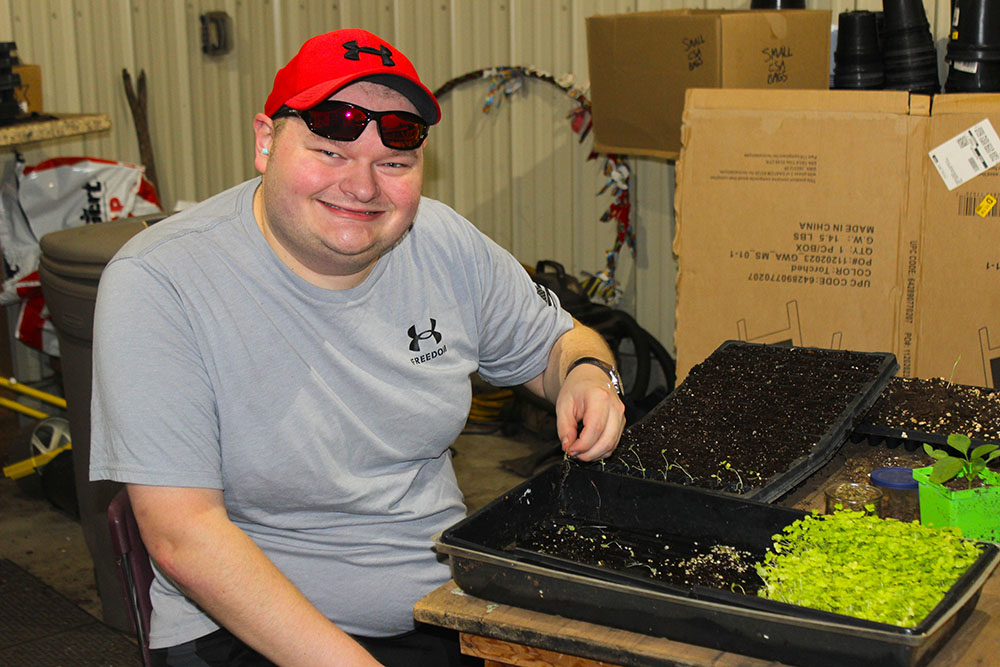

“We are always exploring innovative therapies and opportunities to better serve individuals with autism and their families,” said Thompson. “In January 2025, we’re launching a new senior living group to support our aging residents with specialized programs and activities.”
“The most rewarding part for me is seeing the partnerships developed between the individuals with autism we serve and our staff,” said Thompson. “There’s no hierarchy here—just camaraderie and mutual respect.”
Thompson and Kuntz-Wineland encourage those interested in learning more or getting involved, and invite anyone to come out for a tour. “Whether you’re looking for services or want to support our mission, we welcome you,” said Thompson.
You can learn more about Bittersweet Farms by visiting their website.
How to research Ohio bills, laws


This story was originally published by Signal Statewide. Sign up for their free newsletters at SignalOhio.org/StateSignals. Statewide is a media partner of the Toledo Free Press.
Andrew Tobias | Signal Statehouse


Members of the Ohio House of Representatives and Ohio Senate introduce hundreds of bills every two-year legislative session. Here are some tips for learning more about them.
Perhaps Schoolhouse Rock inspires you. Or you are just curious about a proposed law you heard about.
- What exactly is in it?
- Who sponsored the bill?
- Did the bill pass?
- Who voted for it?
The good news is you can find the answers to many of the questions yourself.
How to find a bill
Members of the Ohio House and Ohio Senate introduce hundreds of bills every two-year legislative session. These bills are assigned numbers and listed on the legislature’s website.
Many news outlets make a point of including a bill’s official name in articles to make it easier for interested readers to find more information about them. Here are some examples of bills that have been covered by Signal Statewide and other media outlets recently.
- Ohio Senate Bill 104, restricts the use of certain bathrooms by transgender students at state schools and universities. Gov. Mike DeWine signed the bill into law on Nov. 27.
- Ohio House Bill 296, which increases the amounts local governments must contribute toward police and firefighter pensions. The Ohio House passed the bill in December, but the Ohio Senate failed to act on it before the legislative session ended at the end of 2024. It will have to be reintroduced and approved again if it’s going to pass.
- Ohio House Bill 315, a sprawling bill state legislators passed in the final hours of their December “Lame Duck” session. The bill was a low-profile tweak to state laws governing townships but grew into a “Christmas Tree” bill thanks to a 441-page amendment lawmakers inserted before approving it. (CQ this, since DeWine might veto some or all of it)
If you know the bill’s name, you can easily take advantage of the Legislative Service Commission’s mini-website for each bill. The LSC, as the commission is commonly known, is the nonpartisan research arm for the legislature and the official repository of information about each proposed bill. Its website provides the following information organized under easily identified tabs explained below:
- Summary: This describes the bill’s general purpose, lists its sponsors (including the main sponsors’ pictures) and says what legislative committee is reviewing it.
- Documents: This contains links to the full text of the bill, with updated versions for each time a committee or the full House or Senate make changes. It also contains the analysis the LSC performs for every bill summarizing what it does in relatively plain English. Some bills also have a fiscal analysis, which describes the proposal’s price tag for state or local governments. When bills are changed in preliminary committees, the LSC typically publishes a comparison document or “comp doc” that describes the changes, which officially are called amendments.
- Status: This lists where the bill stands in the legislative process, which has several steps.
For example, when a bill is introduced, it is then referred to a committee. When and if the committee passes it, it then moves to the full legislative chamber from which it originated. If it passes there, then the bill is sent for consideration to the other chamber, which follows the same process.
- Votes: This shows when a bill passed, first in the preliminary committees and in the final vote before the full House or Senate. If you click “breakdown,” you can get a list of which legislators voted for and against it.
- Committee activity: This lists all written, public committee testimony for and against a bill, including listing that person’s name, affiliation and whether they’re for or against a bill. This can give you an idea of what a proposal’s pros and cons are and what special interests are for or against it, although sometimes those interests will lobby privately for a bill, especially if it’s controversial.
If you’re very interested in learning more about the action surrounding a particular bill – we’re using the word action very loosely here – you can visit The Ohio Channel, which is like the C-SPAN of Ohio’s state government. It publishes videos of all legislative committee hearings and full legislative sessions as well as official press conferences and other bonus content.
What if I don’t know the formal name of a bill?
If you can’t find a bill’s formal name in a news article or other source, you can always try Googling it, making sure to include terms that describe what it does. The Ohio Legislature’s website also has a search function that allows users to type in key terms.
But take note. There’s an issue you may run into if you’re researching an older bill. In each new legislative session, the bill numbering system starts over again. The most recent legislative session, the 135th General Assembly, started in January 2023 and ran through December 2024. The 136th General Assembly starts in January and runs through December 2026.
On the state website, make sure the session number lines up with the year the bill you’re researching was introduced or passed.
You can also just ask me and I’ll try to help.
How an Ohio bill becomes law
Time for Schoolhouse Rock, although the process is a little different in Columbus than it is in Washington, D.C.
Every new law begins its life as a bill in some form or another. The most common path one takes is a standalone bill. A lawmaker may propose an idea and ask colleagues to cosponsor it. This might be a response to a constituent concern, a proposal written by a special interest group or a version of a law passed in another state. It also could be a request from the governor, whose only official role in legislation is deciding whether or not to sign it into law but who often plays a key role in making policy proposals.
Typically, bills are first assigned to a legislative committee in the chamber where they originated. They are reviewed or changed and then sent to the full House or Senate for a full vote. If a bill passes there, it heads to the other chamber, where the process starts again.
If the House and Senate end up passing different versions of the same bill, sometimes they’re sent to what’s called a conference committee, where each chamber appoints a few members who are tasked with coming up with a compromise. The bill then goes back to the full House and Senate for approval.
The governor’s role in the bill process
Once a bill is passed by both chambers of the legislature, it heads to the governor’s desk for a signature. If signed, it becomes law. If the governor does nothing, it becomes law automatically within 10 days. If the governor vetoes it, the legislature can overturn the veto if it can get votes from three-fifths of members in each the House and the Senate.
An approved bill becomes law after 90 days. But lawmakers can attach an emergency clause that causes them to take effect immediately, although that requires a two-thirds vote from each the House and the Senate.
What kind of weird stuff can happen?
Sometimes, the process is as previously described. But sometimes changes to bills are introduced in committee hearings or at the last minute via amendments. And each two years, the state passes a budget bill that funds basic state operations, but that also contains thousands of pages of law changes.
So it might look like a bill you’re researching never passed. But maybe it just got mashed up with a different bill. This is hard to figure out, and this is generally why we try to list bill numbers in our stories.
Signal Statewide is a nonprofit news organization covering government, education, health, economy and public safety.
Springfield Splash rings in new year


HOLLAND – As light snow fell amid a wind chill of only 23 degrees, dozens of people, mostly in shorts and many shirtless, gathered at the edge of the pond at Homecoming Park on New Year’s Day.
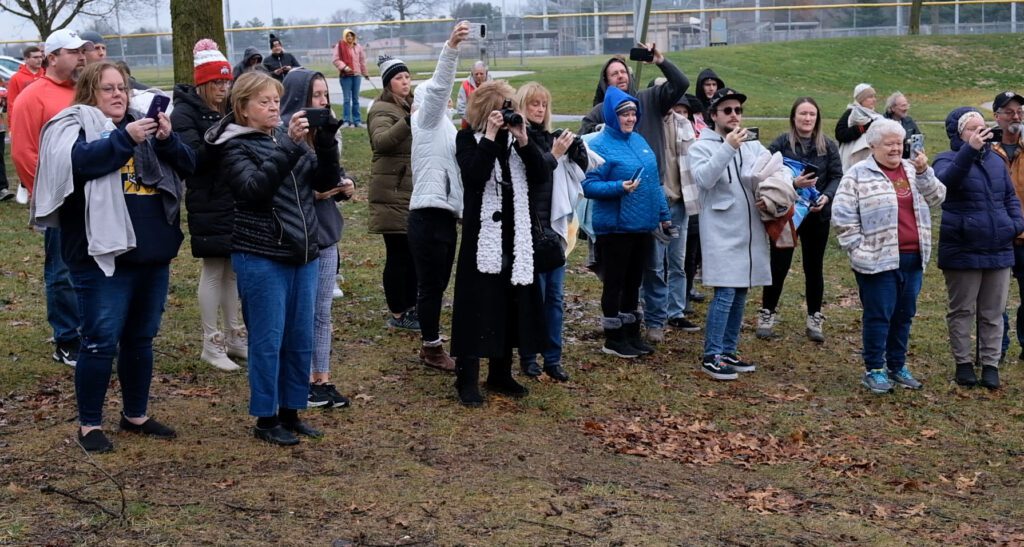

As it neared 1 p.m., the “splashers,” as Springfield Township trustee Andy Glenn affectionally calls them, waited in anticipation for him to give the signal that it was time to descend into the frigid water.
Then, at exactly 1, Glenn exclaimed “Happy New Year,” raised his arms in celebration and joined the pack as they rushed in and out of the pond to kick off the 5th annual Springfield Splash, an event which lasted about five minutes.
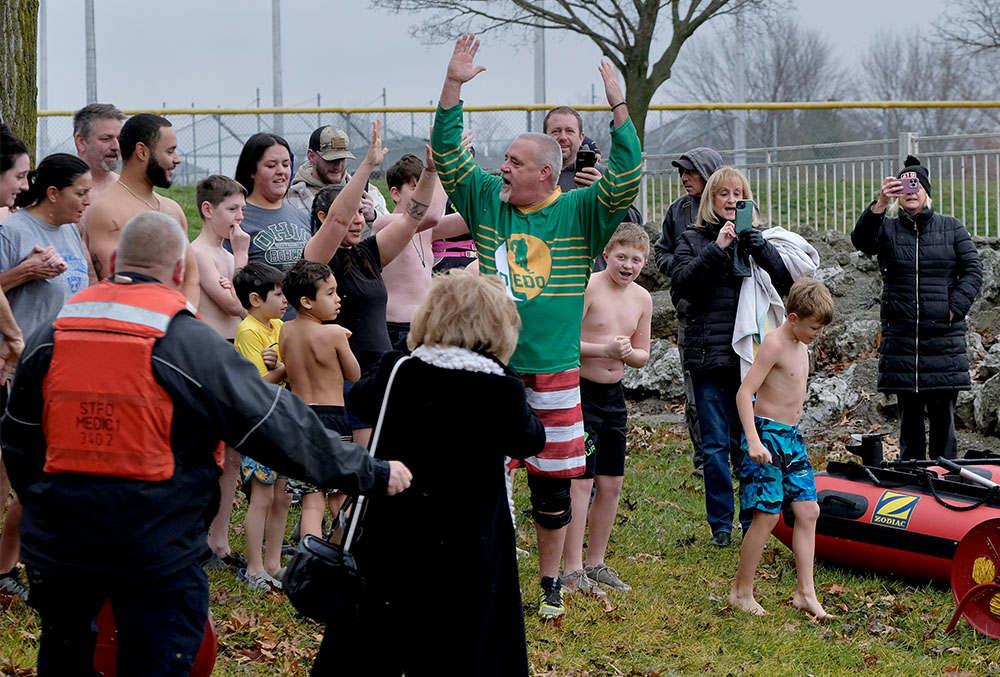

After the brisk plunge, the splashers, wrapped in blankets and towels, mingled for about 30 minutes with family and friends to share their experience of what it was like to dive into extreme cold pond water on the first day of the new year.
One of those splashers was Springfield Township resident Butch Boulton, joined in the water by his grand-dog, Grizzy, a female chocolate lab.
Boulton said this was his fourth time to partake in the splash so he now considers it a tradition, and that it “cleanses the old year and brings in the new year. And it’s cold!” he added with emphasis.




Wrapped in a fluffy white blanket, Brenna Koback described her fifth Springfield Splash as “exhilarating,” and a good example of mind over matter.
“Think of when you say you can’t do things and then when you do, you’ve over-accomplished,” she said, feeling quite accomplished.
Glenn said he started jumping into the Maumee River on New Year’s Day in 2011, but after several cancellations and site relocations of Waterville’s historic polar plunge over the years, Glenn made the decision that Springfield needed their own polar plunge so he founded the Springfield Splash in 2020.
“It’s been awesome and it’s growing every year,” he proclaimed. “I think it’s a great event, and we want to do more things with it next year, like tie in either a charity or scholarship fundraiser. We’re still talking about all that, but yeah, we want to grow this into a big event for Springfield.
“Listen, I hate being cold,” he added. “I never thought I’d be doing anything like this in my life, but I’m telling you that if you do it once – you’ll be back the next year to do it again.”
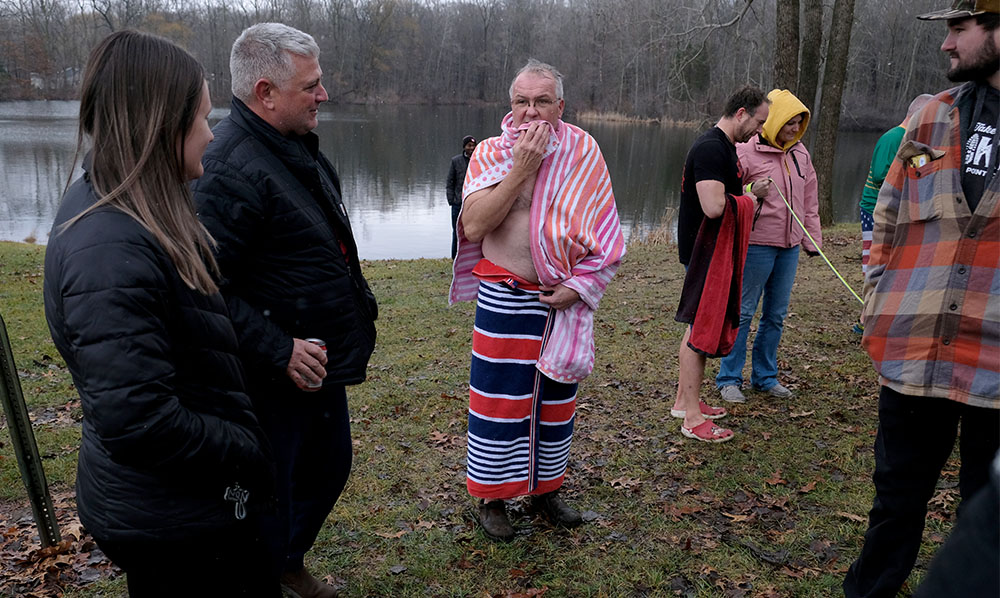

Another Springfield Township trustee who braved the splash was Tom Anderson, Jr., who agreed that in future years the splash will be a great way to raise money for a scholarship or the swim team.
“It’s a good, fun way to get the community together,” he said.
“It’s really a good time. As you can see,” he added as he gestured to those still milling around, “everybody was smiling and laughing and that’s what it’s about. Happy New Year!”




